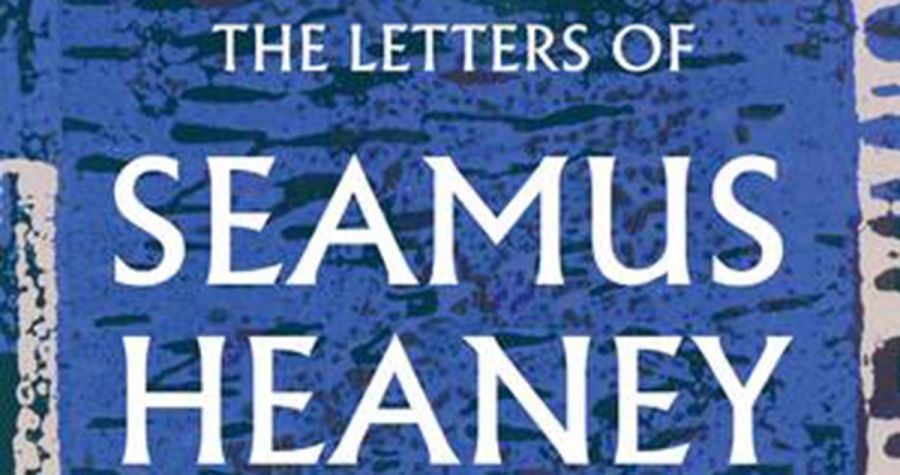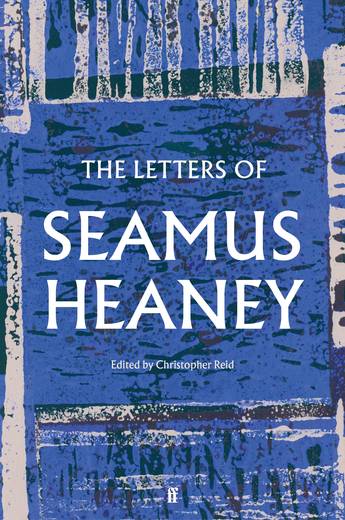
- Free Article: No
- Contents Category: Letters
- Review Article: Yes
- Article Title: Posthumous Paddy
- Article Subtitle: Seamus Heaney’s life in letters
- Online Only: No
- Custom Highlight Text:
‘Australia has been a great experience,’ declares Seamus Heaney in a letter to Tom Paulin from Launceston, Tasmania, in October 1994. As well as visiting Melbourne, Brisbane, and Sydney, delivering poetry readings along the way, Heaney gave a lecture in Hobart on Oscar Wilde and The Ballad of Reading Gaol, ‘saying it was as much part of the protest literature of the Irish diaspora as “The Wild Colonial Boy” or the ballad of “Van Diemen’s Land”’. What he most enjoyed in Queensland was a drive through the country – ‘red earth and white-barked gum trees’ – to the town of Nambour, close to where his Uncle Charlie (his father’s twin brother) had lived in the 1920s. Heaney’s letters are a vivid interweaving of travelogue, literary allusion, poetic imagery, and personal history. Sharing pleasure in the power of words is fundamental, even when letter writing becomes a thing of duty, rather than beauty, and the unanswered mail piles up around him.
- Book 1 Title: The Letters of Seamus Heaney
- Book 1 Biblio: Faber, $89.99 hb, 847 pp
- Book 1 Cover Small (400 x 600):

- Book 1 Cover (800 x 1200):

The self-laceration in the letters is a way of prompting poetry. Heaney quotes approvingly the insistence of his great poetic predecessor W.B. Yeats: ‘We make out of the quarrel with others, rhetoric, but of the quarrel with ourselves, poetry.’ The immense value of these letters is in affording us an intimate understanding of the making of a poet over a period of nearly fifty years. They reveal the personal and cultural pressures that shaped the poems, as well as the musings and imaginings that eventually took shape as books of poems, essays, and translations. The letters are places of self-reflection and self-critique, with Heaney ruefully confessing in 1977 to having ‘rebuked the lyric in myself’. Readers expecting pronouncements on the sectarian conflict in Northern Ireland or on Heaney’s Catholicism will find relatively little, though explosions in Belfast occasionally punctuate the letters. There are brief but brilliantly illuminating explorations of Catholic consciousness in letters to Ted Hughes and Eamon Duffy.
The letters begin in 1964, with Heaney’s happy announcement of his engagement to Marie Devlin, and they close with the two words of Latin, ‘Noli Timere’ (Don’t be afraid), sent to her in a text message shortly before his death on 30 August 2013. They candidly record the personal circumstances surrounding the most significant moments in a long poetic career: the publication of his first book of poems, Death of a Naturalist, in 1966; his exposure to American poetry and culture in Berkeley, California, in 1970; his decision to leave Belfast and move with his family to Glanmore in rural County Wicklow in 1972; his appointment to a lecturing post at Harvard University in 1978 that would lead to a professorship in poetry from 1984 to 1998; his appointment to the Chair of Poetry at Oxford University in 1989; and the award of the Nobel Prize in Literature in 1995. Increasingly, especially after 1995, Heaney finds himself ‘pushed to the side of my own life’ (one of many echoes of Philip Larkin’s poem ‘Afternoons’) with an exhausting and unremitting schedule of readings, lectures, interviews, and public engagements – ‘a life of hurry and podiums and senatorial pomps’.
‘I find myself answering letters in the lost hours in airports,’ Heaney writes from the Tara Lounge at Kennedy Airport in New York. Just as likely, the letters are written ‘In the air, with British Air’, and they often give the writer’s address as Aer Lingus Flight E1 117 (Dublin to Boston). A letter written to Bernard O’Donoghue in February 1990 is headed ‘En route by train between Boston and NY’ and offers assurance that ‘the shaky nature of the calligraphy is truly due to the moving train (great symbol of the continent and all that) and not to the can of Budweiser that shimmers to my left’. The poet on the move delights in using ‘fancy writing paper’ purloined from airport lounges and hotels, all the time protesting that there is never enough time to write the ‘real letter’ that is called for.
In Glanmore, Heaney finds repose and imaginative nurturing. Some of his most sustained and inspired letters, as well as some of his finest poems, are written in what was formerly the gate-lodge on J.M. Synge’s estate in County Wicklow. In the same month as he composes his ‘Glanmore Sonnets’ (September 1988), he describes the house in a letter to John McGahern: ‘It’s stone, slate, dormers, shutters, tiles, mustiness, tongue-and-groove, latches, bars and bolts, cold water, open hearths.’ He tells Helen Vendler (one of his most trusted confidantes), ‘I love it and get refreshed from it every time.’ Most of the letters in the volume are from handwritten originals, though in the 1990s there is grateful reliance on word processors and electronic notebooks. He never used email.
Christopher Reid, who was Heaney’s editor at Faber in the 1990s, deserves applause for his care and dedication in preparing this volume of letters. His Introduction gently guides the reader towards a full appreciation of both the cultural significance and the artistry of the contents, including their ‘verbal aptness and playfulness’. He presents us with a clean and neatly organised text of the letters, while also providing excellent annotations. The volume includes the texts of poems that Heaney attached to letters, and it hints tantalisingly at poems that we are yet to see, including a poem for Elizabeth Bishop, titled ‘A Hank of Wool’. Some letters, including one to Les Murray, are lost. Others have recently come to light, including the marvellously rich correspondence between Heaney and Peter Steele, SJ, currently being edited by Gerald O’Collins, SJ and Manfred Cain in Melbourne.
As it stands, however, this book is an enthralling instance of what Wordsworth termed ‘the growth of the poet’s mind’. Heaney liked to draw a distinction between the ‘human letter’ written to friends and other kinds of correspondence, but his stylistic verve and rhetorical command are in abundance throughout. The letters rehearse ideas for poems in dialogue with his closest friends. He tells the artist Barrie Cooke, ‘I need the voices of my best secret life and life-support. I need to hear fellow-anxieties and intuitions.’ He is magnanimous in his response to the work of other writers, sending generous plaudits, even in the aftermath of a stroke in 2006. He implores his friends, as he urges himself, to ‘carry on’ and ‘keep going’. His verdict on Brian Friel’s play Molly Sweeney in 1994 is an apt characterisation of this moving but always captivating collection of letters: ‘It breaks the heart and lifts it at the same time.’


Comments powered by CComment